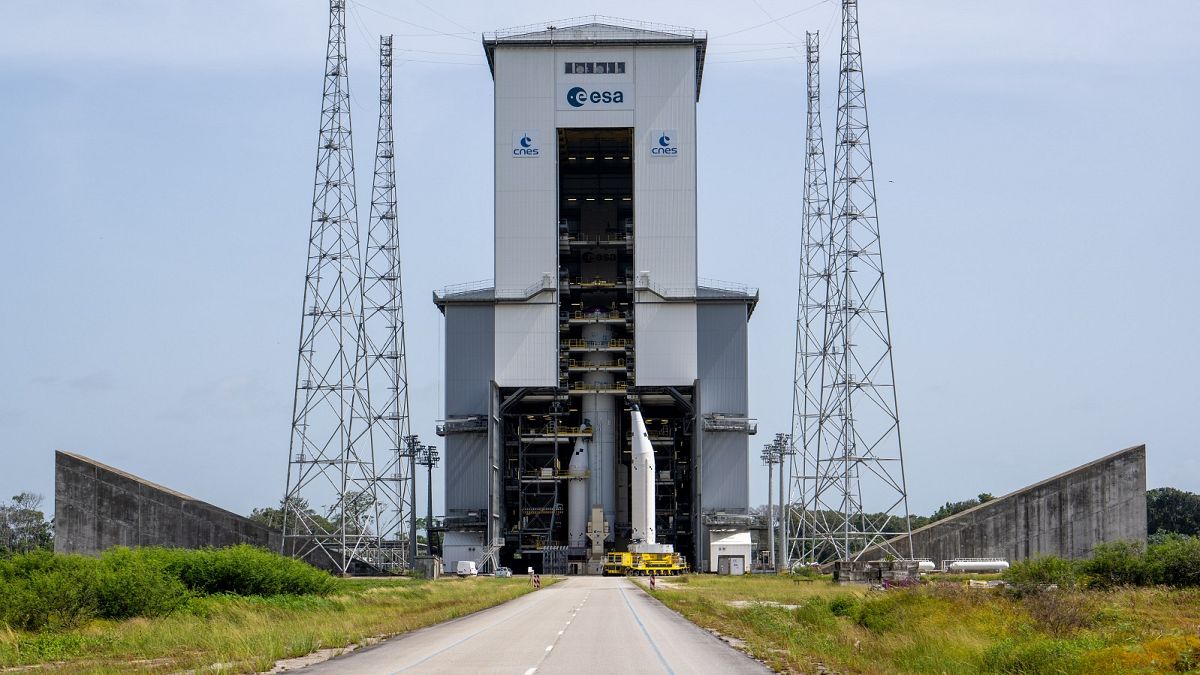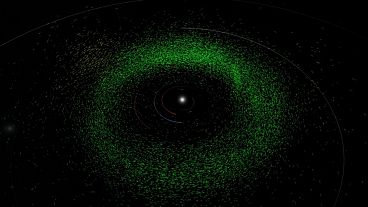The European Space Agency (ESA), Arianespace, and French space agency CNES are in the final stretch of preparations for Ariane 6's inaugural launch.
The official launch campaign of Europe's newest rocket is now well underway with the final assembly of the Ariane 6 rocket on its launchpad at the European Spaceport in French Guiana.
The inaugural flight of the heavy-lift launch system, whose first mission is four years behind schedule, is slated for this summer.
With a launch window pencilled in from mid-June to late July, the successful flight of Ariane 6 will restore Europe's direct access to space following the retirement of its predecessor, Ariane 5.
Work began last week at the European Spaceport to begin the assembly and final testing of the new rocket, when the central core was lifted into a vertical position on the launchpad.
In the following days, two solid rocket boosters were also attached to its side.
Jens Franzeck, Chief Operating Office (COO) and Managing Director of ArianeGroup, said he is ''extremely excited'' about the assembly phase.
''This is the fruit of, more or less, 10 years of work, and it's a historical day today. So you feel in a historical mood. It's more excitement and pride for Europe because it's the first time that we are going to see the central core of an Ariane 6 that's going to fly,'' he told Euronews Next in Kourou.
Solving a European crisis
The absence of a successor to Ariane 5 has been considered something of a European crisis, with the continent's space sector having to opt for other market players like SpaceX to get their payloads into orbit.
"Europe's outlook actually is pretty good because we had a crisis in launchers last year and we have really not wasted the crisis," Josef Aschbacher, the director-general of the European Space Agency (ESA), told Euronews Next at this year's World Economic Forum meeting in Davos in January.
Lucia Linares, ESA's Head of Strategy and Institutional Launches, said Ariane 6 had faced unforeseen problems, including the fallout of Russia's invasion of Ukraine.
"It's true that, since, the last launch of Ariane 5 in July last year, we haven't had our own means to accessing space as a workhorse, right?" she said.
"There was a war. Unfortunately, nobody expected it. And from one day to the next, [Russian rocket] Soyuz was no longer here," she added.
"So indeed, we have faced this and, we have put all our efforts even before we had no access to space to make this happen. Ariane 6 is a big issue for Europe because it will be serving all the needs; from institutional needs of defence, telecommunications, scientific satellites to the commercial needs of Europe and of course beyond".
Ariane 6 will launch up to 12 times per year carrying satellites, with aims to become competitive enough to take on market giants like SpaceX.
There are also hopes that it will - in time - transport European astronauts into space from EU territory for the first time.
Carrying astronauts in the future?
This is a "political ambition," Frank Huiban, ArianeGroup's Head of Civil Programs, told Euronews Next but a goal that Arianespace was ready to help achieve.
''It's up to European states to decide if they want to acquire this capacity. We can only say that we are ready to contribute whenever European states would decide to go," Huiban said.
Ariane 6, the largest launcher produced in Europe to date, will be propelled into space by a mixture of liquid oxygen and liquid hydrogen.
The mission will showcase its reignitable upper stage, a new design feature for the Ariane series which allows for up to four different delivery points in orbit.
It will be available in two versions depending on the required performance: Ariane 62 with two strap-on boosters, and Ariane 64 with four.
The rocket is more than 60 metres tall - equivalent to the first floor of the Eiffel Tower - and will weigh almost 900 tonnes when launched with a full payload, roughly the weight of one and a half Airbus A380 aircraft.
ESA is working with an industrial network of several hundred companies in 13 European countries, led by prime contractor ArianeGroup, to develop Ariane 6.



